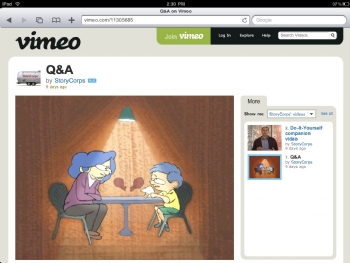
HTML5 and CSS3
Network administration - In the early days of the Internet, the tools for designing a Web site were just HTML and a few other tools. But designing a Web site with HTML is tedious and limited. That's why we need CSS .
Basic HTML and CSS

CSS makes designing and building a Web site easier. Before CSS, you had to use HTML to implement all the titles and components of a Web page. Although there are a number of other ways, HTML is often used and Web designers will have to change each individual element on each page. CSS has helped to change the style of a Web site more simply and less time consuming, you can make changes on a certain item and then apply this change across the Web instead. because it has to be done on each individual item as before.
HTML5 and CSS3
HTML5 and CSS3 are the latest programs for Web design. HTML5 video features - allowing for the simple addition of a video to the Web - have received a lot of attention, not only that HTML5 has many features that make it great for users as well. as Web developers.
Video and Flash effects
HTML5 will allow you to watch videos without using a plugin like Flash or Silverlight.
So what are the big benefits to HTML5 video features? First, it is free and does not need Adobe Flash plugin software. Second, Flash may slow down your computer (although hardware-accelerated Flash 10.1 hardware acceleration software - in beta - may help solve this problem). After all, it's just one of many software running and taking up system resources. With HTML5, video features are built into it.
This new video feature will definitely be a great help for Apple iPhone users because Apple has to deny quite a bit so that any of its controls on the iPhone will be delivered to another application. (This type of control is commonly known as absolute monarchy). But also hope HTML5 will benefit Blackberry phones, the type of phone that most are incapable of supporting flash. In fact, Apple's HTML5 video feature has been so certain that they have a page that pops up the so-called "iPad-ready" Websites.

One important thing to note about HTML5 video is that it is still changing. For example, Safari, Chrome, and the upcoming Internet Exporer 9 will support HTML5 video using H.264 format. Firefox, on the other hand, currently only supports HTML5 video using Ogg Vorbis format, many people after using Firefox believe that H.264's closed source code could cause copyright issues in the future, so it may have to change.
In addition, HTML5 and CSS3 will help Wed designers make it easier to create animated effects and interactive games without using Flash. Some examples of what you can do with HTML5, CSS3 and a little support from JavaScript are Akihabra Games and Star Wars AT-AT Walker. Shack design also has some other CSS3 animation effect examples. Although Flash cannot be completely replaced, HTML5 and CSS3 are promising in this area.
Offline repository: Web application proceeds to the next step
Web applications are becoming increasingly sophisticated, and some new features in HTML5 will help them continue to improve. HTML5 allows web applications to store Internet information and utilities to use when you are offline. This feature will allow storing and accessing data such as e-mail, calendars, and other utilities through Web applications, even when you are offline, which makes Web applications good. more and more useful.
When you log back online these applications will be loaded faster because the structure of the page has been saved in the browser cache. In theory, any changes made to Web applications while offline are preserved when you go back online.
With offline storage you will be able to specify in the browser the pages or types of pages you want the browser to continue to store without having to save each page separately, in other words, you have to do before " File- Save As "any page you want to save while offline, now when using the new system, you will be able to set your browser to automatically save a set of certain pages (for example, all of belong to a Web site).
This will also increase the loading speed when online because a portion of the page is already stored in memory, so you won't have to wait for the entire page content to refresh.
According to Google, HTML5 will begin to be used for Web applications in December of this year instead of its own Google Gears template.
New design tool
HTML5 and CSS3 also make Web applications and Web sites more attractive. HTML5 has new features added to make building web applications a lot easier. For example, more colors and support curves, blurring, rounded corners (instead of forcing web designers to use images to create rounded corners), and of course storage offline. All of this is that a Web site becomes more eye-catching, eye-catching, and makes everything close to what the designer imagines in the head.
Although HTML5 and CSS3 have not yet been finalized, they have changed the face of the Web. Some browsers - like current versions of Safari and Chrome - have implemented some features from the draft versions of HTML5 and CSS3. And with the use of these browsers you can view many websites which also use HTML5 and CSS3 like CNN.com, The New York Times, YouTube (in beta) and Vimeo.
The current version of Internet Explorer, IE 8 browser, very limited HTML5 support, however, IE 9 will support H264 video, embedded audio, proportional vector graphics and CSS3.
Not to mention HTML5 is still in the "experimental" phase but even some of the technologies being applied to browsers and Wed sites are not technically finished.
HTML5 and CSS3 - combined with other Web technologies like JavaScript - can be very useful for the style, format and speed of any website if used correctly. The two languages will revolutionize the way we program and view the internet with all-in-one enhancements, eliminating the need to use many third-party applications (such as Flash).
The above is only a small part of what HTML5 and CSS3 provide. To learn more, you can see more detailed technical information about HTML5 and CSS3.
You should read it
- Introduction to HTML5
- 12 stunning HTML5 templates that web designers should not ignore
- How to insert CSS to create styles for HTML pages
- HTML editor online
- How to convert from HTML4 to HTML5
- Create a quick website with HTML5 Boilerplate
- 6 websites show the power of HTML5
- HTML5 support on browsers
- Standard format and code coding convention in HTML5
- List in HTML
- Computer code element in HTML
- New elements in HTML5
Maybe you are interested
What happens to an astronaut's body after 9 months in space? Mysterious black objects appear in NASA sun photos 10 strange and interesting facts about the universe you may not have heard of 12 super foods you should have on the menu Scientists are increasingly interested in warp engines, which 'space distortion' technology allows us to travel at the s The interesting scientific knowledge that we missed while at school
